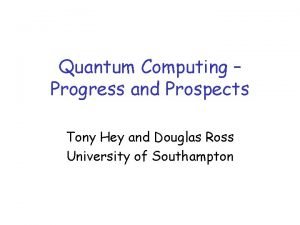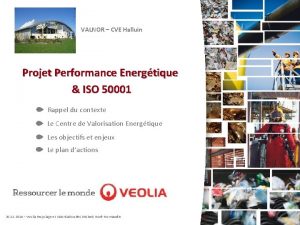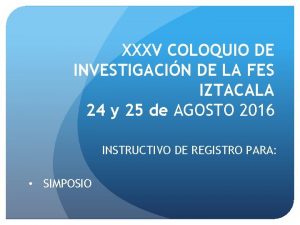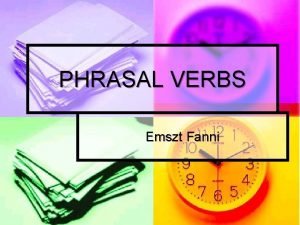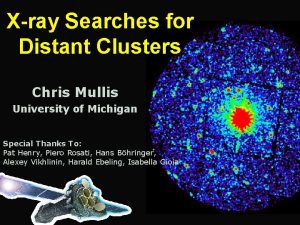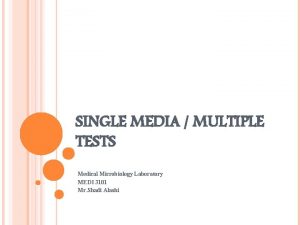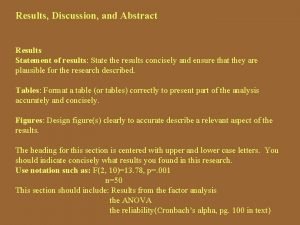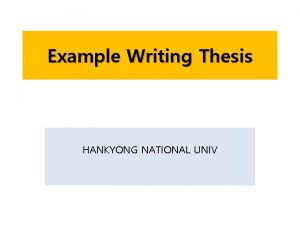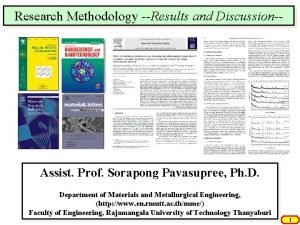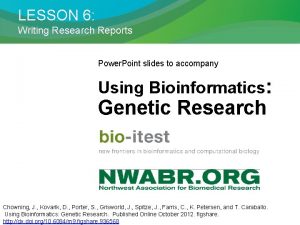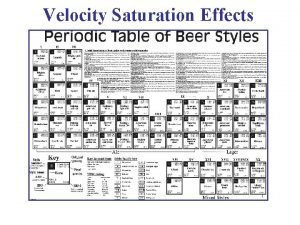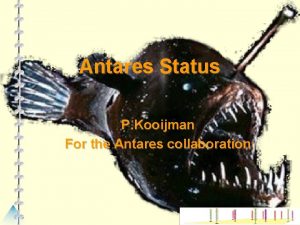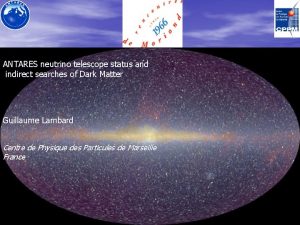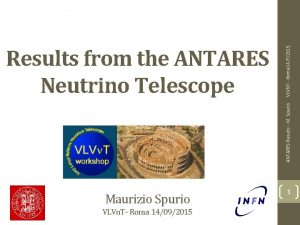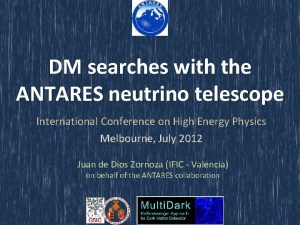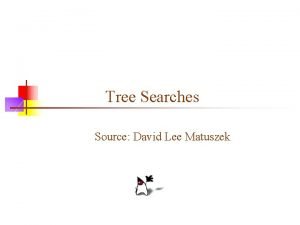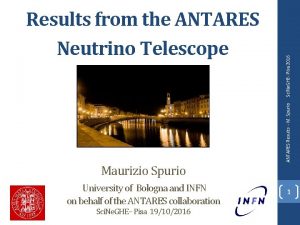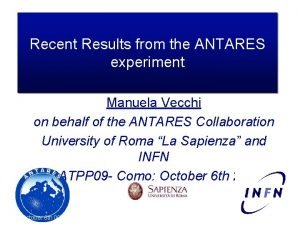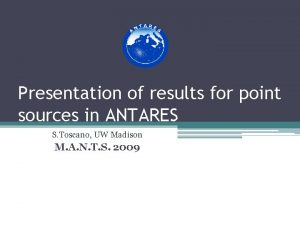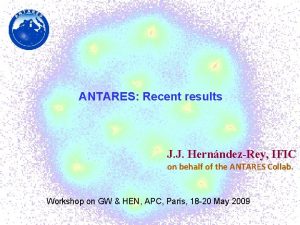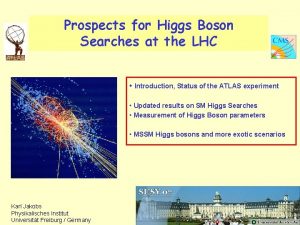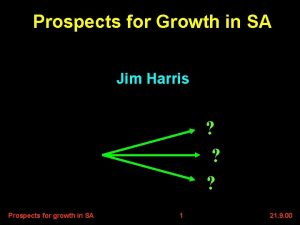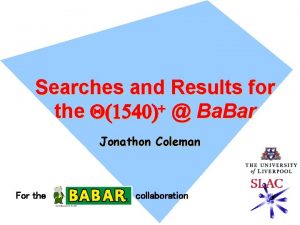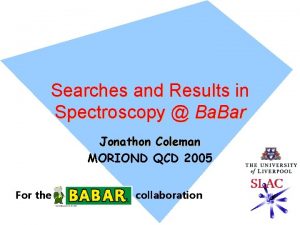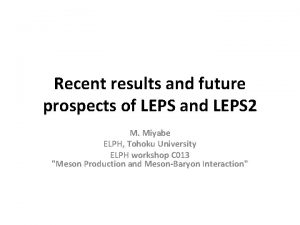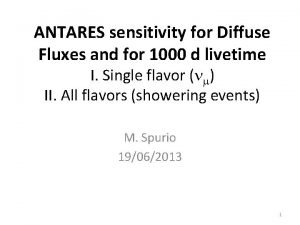Results and prospects of DM searches with ANTARES
































- Slides: 32

Results and prospects of DM searches with ANTARES Roma International Conference on Astroparticle Physics Rome, May 2013 Juan de Dios Zornoza (IFIC – Valencia) in collaboration with G. Lambard (IFIC) on behalf of the ANTARES collaboration

Scientific scope o o o Origin of cosmic rays Hadronic vs. leptonic signatures Dark matter Detector size Supernovae Oscillations Limitation at low energies: -Short muon range -Low light yield -40 K (in water) Me. V Dark matter (neutralinos, KK) Astrophysical neutrinos Limitation at high energies: Fast decreasing fluxes E-2, E-3 GZK Ge. V Te. V Pe. V Ee. V Detector density Other physics: monopoles, nuclearites, Lorentz invariance, etc. . .

The ANTARES detector • 12 lines (885 PMTs) • 25 storeys / line • 3 PMT / storey Buoy 14. 5 m Storey Horizontal layout 350 m Detector completed in 2008 100 m Junction box Electrooptical cable ~60 -75 m Readout cables

Detection of DM o WIMPs (neutralinos, KK particles) are among the most popular explanations for dark matter o They would be accumulated in massive objects like the Sun, the Galactic Center, dwarf galaxies… o The products of their annihilations would yield “high energy” neutrinos, which can be detected by neutrino telescopes o In the Sun a signal would be very clean (compared with gammas from the GC, for instance) o Sun travel in the Galaxy makes it less sensitive to non-uniformities

Detection principle o The neutrino is detected through the Cherenkov light emitted by the muon produced in the CC interaction. W N 1. 2 Te. V muon traversing ANTARES X

WI MP s Signal simulation: WIMPSIM νe, νμ, ντ Sun Earth o Blennow, Edsjö, Ohlsson (03/2008): “WIMPSIM” model-independent o o o production Great statistics with 12× 106 WIMPs annihilations Capture rate and annihilations in equilibrium at the Sun core Annihilations in c, b and t quarks, τ leptons and direct channels Interactions taken into account in the Sun medium Three flavors oscillations, regeneration of τ leptons in the Sun medium (Bahcall et al. ) available parameters (WIMPs mass, oscillations parameters. . . )

Energy spectrum

Detector response DM analyses are in the “low energy” range of neutrino telescopes Angular resolution 5 lines 9 lines 12 lines kinematic 12 lines

Background estimation o The background is estimated by scrambling the data in time o A fast algorithm is used for muon track reconstruction (Astrop. Phys. 34 (2011) 652 -662) o The effect of the visibility of the Sun is taken into account All upward-going events from 2007 -2008 data Example of Sun tracking in horizontal coordinates

Event selection Elevation angle Track fit quality parameter o Good data – MC agreement: detector understood! o Only upgoing events are selected o Fit quality parameter used for further selection ~ 1000 events selected

Cut optimization o Neutrino flux at the Earth x Detector Efficiency x Visibility Signal o Data in the Sun direction time scrambled Background o Cuts on the angular window size and on the track quality cut are chosen to optimize the flux sensitivity Once the optimum quality cuts are chosen we proceed to unblind…

After unblinding 12 …no excess data comparable to background ar. Xiv: 1302. 6516 (keep searching)

Limit on neutrino flux from the Sun

Limit on muon flux from the Sun

Cross section calculation Differential neutrino flux is related with the annihilation rate as: where the capture rate can be expressed as: If we assume equilibrium between capture and annihilation in the Sun:

CMSSM: SD/SI cross section limit Spin-dependent and spin-indpependent cross-section limit for ANTARES 2007 -2008 in CMSSM Compare SUSY predictions to observables as sparticles masses, collider observables, dark matter relic density, direct detection cross-sections, … Super. Bayes (ar. Xiv: 1101. 3296)

MSSM-7: SD/SI cross section limit MSSM-7 phenomenological model

Prospects • More data: 2007 -2012 (>7000 neutrinos) • Use complementary reconstruction algorithms • Include single-line events 2007 -2010 data 1 -line events: only zenith, but still helps a lot at LE Preliminary WIMP Mass

Prospects with 2007 -2010 data: muon flux limit Preliminary spin dependent Preliminary spin independent

Summary q Dark matter is a major goal for neutrino telescopes (and an important complement to direct detection experiments) q Computed the detector efficiency for two common dark matter models (CMSSM, MSSM-7) q First analysis done by looking at Sun. Limits for the CMSSM and MSSM-7 in muon/neutrino flux and SD and SI cross-section calculated q Analysis on 2007 -2010 data advanced with preliminary sensitivity calculated q Estimations Galactic Center well advanced

Neutrino candidate with 12 -line detector

Backup

Background from the Sun o The interaction of cosmic rays in the Sun (p-p) produces “atmospheric solar neutrinos”, after the decay of the products (pions and muons) De C. Hettlage et al. , Astropart. Phys. 13 (2000) 45 -50 νμ Only 10 -3 events per year in ANTARES (0. 4% of total atmospheric background)

SD cross section calculation Conservative view on the local region: - Jupiter Effect - w/o additional disk in the dark matter halo - local density 0. 3 Ge. V. cm-3 (arxiv: 0903. 2986 v 2)

SI cross section calculation Conservative view on the local region: - Jupiter Effect - w/o additional disk in the dark matter halo - local density 0. 3 Ge. V. cm-3 (arxiv: 0903. 2986 v 2)

Signal computation o Usually, we need : o Flux (example: WW) at the surface of the Earth o Capture rate into the Sun, dependent on the SD, SI cross-section o Annihilation rate Γ ~ 0. 5 * C (equilibrium condition) o Flux from WIMPSIM o Cross-section from Analytic computation, or simulation in the parameter space of the models o For Kaluza-Klein, Branching ratio not so dependent on the location in the parameter space (R, Δ, and SM Higgs mass mh) o For CMSSM, it’s different… Equilibrium in the Sun well/not reached, SD/SI very dependent on the parameter space, branching ratios very dependent, main channel chosen is not so obvious -> large systematic from the sensitivity computed o Need a simulation, and fast one, to compute the cross-sections, the capture rate, etc, for the allowed parameter space

Super. Bayes o Supersymmetry Parameters Extraction Routines for Bayesian Statistics o Multidimensional SUSY parameter space scanning o Compare SUSY predictions to collider observables, dark matter relic density, direct detection cross-sections, … o Using a new generation Markov Chain Monte Carlo for a full 8 -dim scan of CMSSM o Using PISTOO farm at CC-Lyon to run it o Well documented (articles, Website), as Dark. SUSY package o Parameter set of CMSSM (m 0, m 1/2, A 0, tanβ) o « Nuisance parameters » from SM (mt, mb, αem, αs)

Neutrino Muon flux conversion Using Dark. Susy, the neutrino flux can be converted to muon flux

Edsjo

Edsjo

Experimental constraints

Title
 How are barnard's star and antares alike
How are barnard's star and antares alike Quantum computing: progress and prospects
Quantum computing: progress and prospects Veolia
Veolia Ies antares
Ies antares Antares iztacala
Antares iztacala I cielo narrano
I cielo narrano The principal contrast in the passage is between
The principal contrast in the passage is between Prospects of agriculture in bangladesh
Prospects of agriculture in bangladesh World population prospects
World population prospects Prospects preposition
Prospects preposition What is cross projection sketch
What is cross projection sketch Xray searches
Xray searches Who fought in the punic wars?
Who fought in the punic wars? Mio test results
Mio test results Results and discussion in research
Results and discussion in research Findings of qualitative research
Findings of qualitative research Objectives and key results template
Objectives and key results template What is the selective pressure
What is the selective pressure Lia
Lia Example of results and discussion
Example of results and discussion It should relate directly to the aims of the report
It should relate directly to the aims of the report Results and discussion vs conclusion
Results and discussion vs conclusion Methodology results and discussion
Methodology results and discussion Writing results and discussion
Writing results and discussion Employee engagement survey action plan ppt
Employee engagement survey action plan ppt Results and discussion example
Results and discussion example How did the holocaust develop and what were its results
How did the holocaust develop and what were its results Minuhud
Minuhud Promixmal
Promixmal Results and discussion example
Results and discussion example Results of the world war 1
Results of the world war 1 Epyg 2019 results
Epyg 2019 results What is velocity saturation
What is velocity saturation

